 From documentaries and horror films to coming-of-age dramas, La Película has something for everyone. The festival, organized by Cervantes Institute, the Spanish embassy in Prague, and Světozor cinema, takes place in Kino Světozor in Prague Feb. 14-19, Brno cinema in Scala Feb. 16-19, Minikino in Ostrava Feb. 20-22, and Bio Central in Hradec Králové Feb. 20-24. According to organizers, “The 11th annual edition of the festival of Spanish speaking films will please fans of one of the most acclaimed Spanish director, Julio Medem. The festival will be open with his latest film, Ma Ma, starring Penelope Cruz. One of the program sections of the festival is dedicated to Basque cinema.” Other notable films include the 2001 classic Sex and Lucia by Julio Medem which is about a young waitress who ventures to a Mediterranean after the loss of her boyfriend only to find the dark secrets of their relationship revealed, Beautiful Youth which is about two 20-year-olds in love struggling to make ends meet in today’s Spain who try and earn some extra money by shooting an adult movie, and Jai Alai Blues which is a documentary about the success of the game and the gambling that became very popular in various countries.
From documentaries and horror films to coming-of-age dramas, La Película has something for everyone. The festival, organized by Cervantes Institute, the Spanish embassy in Prague, and Světozor cinema, takes place in Kino Světozor in Prague Feb. 14-19, Brno cinema in Scala Feb. 16-19, Minikino in Ostrava Feb. 20-22, and Bio Central in Hradec Králové Feb. 20-24. According to organizers, “The 11th annual edition of the festival of Spanish speaking films will please fans of one of the most acclaimed Spanish director, Julio Medem. The festival will be open with his latest film, Ma Ma, starring Penelope Cruz. One of the program sections of the festival is dedicated to Basque cinema.” Other notable films include the 2001 classic Sex and Lucia by Julio Medem which is about a young waitress who ventures to a Mediterranean after the loss of her boyfriend only to find the dark secrets of their relationship revealed, Beautiful Youth which is about two 20-year-olds in love struggling to make ends meet in today’s Spain who try and earn some extra money by shooting an adult movie, and Jai Alai Blues which is a documentary about the success of the game and the gambling that became very popular in various countries.
The festival, which as aforementioned is currently on its 11th year, has grown in size since its creation in 2002, and throughout the years has been extended in length along with the number of venues increasing from one to four. In previous years the festival has also included cultural events such as cinematic workshops, music and dance performances, and photographic exhibitions. Information about this year’s festival can be found at http://www.lapelicula.cz or on the official Facebook page at https://www.facebook.com/LaPeliculaCZ/.
Spanish Film Festival in Prague
Lone Stars
To celebrate Language Magazine’s partnership with the TCEA (Texas Computer
Education Association) at its annual convention in Austin this month, here is a
selection from the wide range of products on offer
Cantata Learning Offers Multisensory Stories
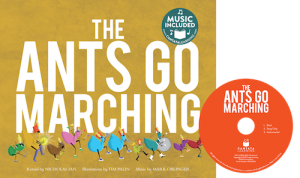 To offer a multisensory learning experience that engages a wide range of learners, educational publisher Cantata Learning has created books enhanced with music. These pre-K–3 products combine engaging stories, delightful illustrations, and fun songs for a unique learning experience.
To offer a multisensory learning experience that engages a wide range of learners, educational publisher Cantata Learning has created books enhanced with music. These pre-K–3 products combine engaging stories, delightful illustrations, and fun songs for a unique learning experience.
All Cantata Learning products have accompanying melodies to support student engagement and learning. Music is a fun, proven method of introducing new language and concepts to a broad range of students, including ELL/ESL and SPED. Songs can be used in a variety of ways throughout the school, including in the library or classroom, to strengthen language skills such as pronunciation, grammatical structure, and vocabulary. All books come with a CD that contains three different tracks: the book, the song only, and an instrumental version of the song. Free access to all of the songs can also be found online, where the music is available to stream or download.
Librarians and other educators can choose from hundreds of books on the site, where they can search for lessons by subject, grade, reading level, and music genre. Topics span the entire curriculum, from language arts and social studies to STEAM, as well as additional subjects, such as social-emotional learning and simple singalong stories. Examples of titles include Animal Feet: A Song about Animal Adaptations, Little Red Riding Hood, and Make Every Day Earth Day: Caring for Our Planet.
Additional online resources include specially built lesson plans centered around the stories and songs, research articles about literacy and the use of music and movement to teach children, and presentations on best practices for implementing this teaching method.
myON 3.7 Clarifies What Students Are Reading
 myON,
myON,
a business unit of Capstone and leading provider of personalized literacy solutions in the K–12 marketplace, has released myON 3.7, an updated version of the myON Digital Library and Faculty Report. This newest version provides a variety of updated features aimed to give educators a clearer view of what their students are reading and how their skills are developing as they read.
Major new features include trackable Lexile scores, standard correlations by book title, K–2 benchmarks for younger readers, and title usage reports that give teachers insight into which titles are being read and what students think of them.
Teachers can now filter student assignments by roster and by group. They can assign start and end dates for reports and may also search by name, filter by grade, and display the top ten or 20 students in a large roster. To help educators share reports, myON 3.7 offers new, easier print commands and the option to download reports as CSV files.
Redcat Access Accents the Teacher’s Natural Voice
 Redcat Access by Lightspeed Technologies is a receiver, amplifier, and speaker all in one. Frequently paired with the Lightspeed Flexmike microphone, the Redcat provides clear, com
Redcat Access by Lightspeed Technologies is a receiver, amplifier, and speaker all in one. Frequently paired with the Lightspeed Flexmike microphone, the Redcat provides clear, com
plete audio coverage to fill any space and help distribute a teacher’s voice evenly throughout the classroom. Incorporating Redcat Access into daily lessons saves teachers’ voices by making them more audible and more intelligible—without them being raised. The teacher wears the microphone around his neck, so it captures every word and leaves his hands free. Sound is delivered wirelessly, filling the room with the teacher’s natural voice and enabling students to hear the entire lesson no matter where they are sitting. Redcat delivers whole-room audio with exceptional clarity, maximizing students’ time on task and allowing everyone, including ELLs and those with hearing impairments, to hear better and learn better.
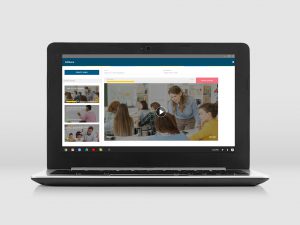 Edthena is a classroom observation platform that facilitates video-based coaching and professional learning for schools and districts. It allows teachers to share videos of their own teaching with coaches and colleagues who provide timestamped comments categorized as questions, suggestions, strengths, and notes. The platform enables teachers and coaches to participate in collaborative professional learning cycles. Reports and graphs, linked to the school’s or district’s associated professional standards, help identify teaching trends, determine if the professional development is improving teaching practices, and provide a basis for ongoing dialogue about instructional best practices.
Edthena is a classroom observation platform that facilitates video-based coaching and professional learning for schools and districts. It allows teachers to share videos of their own teaching with coaches and colleagues who provide timestamped comments categorized as questions, suggestions, strengths, and notes. The platform enables teachers and coaches to participate in collaborative professional learning cycles. Reports and graphs, linked to the school’s or district’s associated professional standards, help identify teaching trends, determine if the professional development is improving teaching practices, and provide a basis for ongoing dialogue about instructional best practices.
Using a Chromebook for video coaching is now a reality with Edthena’s new Chromebook app. The app automates the process of recording and uploading videos of any length, so teachers can complete an entire video coaching cycle—from recording to upload to feedback—on a Chromebook device. With this release, video tools are now available for all major device platforms found in schools—Windows, Mac OS X, iOS, and Chrome OS.
Schools, districts, and teacher education programs in more than 30 states are using Edthena’s platform to make video observation an integral part of teacher induction, teacher mentoring, professional learning communities (PLCs), and peer observation.
Rap with Flocabulary
 Flocabulary is a learning program for all grades that uses educational hip-hop music to engage students. Teachers at 20,000 schools use Flocabulary’s videos, instructional activities, and student creativity tools to supplement instruction and help develop core literacy skills.
Flocabulary is a learning program for all grades that uses educational hip-hop music to engage students. Teachers at 20,000 schools use Flocabulary’s videos, instructional activities, and student creativity tools to supplement instruction and help develop core literacy skills.
The program uses music to get students interested and ready to learn while teaching key skills and concepts. Research has shown that students are motivated when the material they are learning is interesting and relates to them.
Digital subscriptions to Flocabulary offer access to more than 800 videos with accompanying classroom resources to support instruction in math, science, social studies, ELA, vocabulary, current events, and life skills, with new content every week. Over the course of a Flocabulary lesson, educators hook students with a video, then lead students to master the subject matter through a series of exercises. To culminate the unit, students demonstrate their voices and make the content their own using Lyric Lab, an interactive tool that supports students in writing academic rhymes.
Free Content on MyVocabulary.com
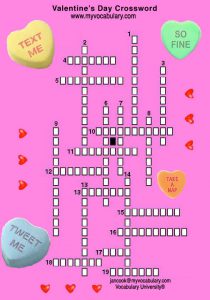 MyVocabulary.com has created over 2,500 web pages of free educational content puzzles/activities/lesson plans across the curriculum (nearly 100 academic-subject and calendar-specific themed features). Over 730 subject word lists are used by ELL/ESL/LEP teachers and their students.
MyVocabulary.com has created over 2,500 web pages of free educational content puzzles/activities/lesson plans across the curriculum (nearly 100 academic-subject and calendar-specific themed features). Over 730 subject word lists are used by ELL/ESL/LEP teachers and their students.
The site uses different types of puzzles to capture a student’s attention and address learning styles: interactive puzzles emphasizing Latin roots, definition matching, fill-in-the-blank games, crosswords, word searches, synonym vs. antonym comparisons, true or false questions, and an audio reading passage using the words in context. Grade-level vocabulary is determined from a readability index/frequency of use list to promote “student level” literacy.
All content is available without registration or fees, but there is an open educational resource “premium subscription” product that allows participants (teachers, students, families, and so on) to use the multiple puzzle engines to customize their own vocabulary puzzles. Teachers can use their own words, if desired.
Having the vocabulary for 155 novels, plays, and books is unusually useful for ELA teachers. Some of the most requested novels have four additional puzzle activities to ensure comprehension and develop better vocabulary abilities. For those students interested in college, there is a test prep vocabulary area for ACT and SAT exams where various puzzle exercises test successful learning.
ThinkCERCA Adds Blended-Learning Planning Tool
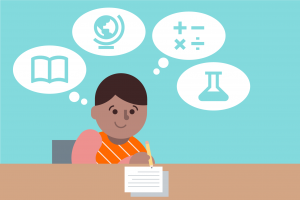 ThinkCERCA has launched their new Classroom Planning Tool for its personalized literacy platform. The tool enables teachers to customize classrooms into blended-learning environments that create personalized learning experiences for students. Teachers begin by searching for a model based on their school’s level of technology access and time constraints.
ThinkCERCA has launched their new Classroom Planning Tool for its personalized literacy platform. The tool enables teachers to customize classrooms into blended-learning environments that create personalized learning experiences for students. Teachers begin by searching for a model based on their school’s level of technology access and time constraints.
The platform then generates a selection of robust classroom models, which include station-based rotations, leveled groups, responses to intervention, and many more. Once educators select a lesson model, they are provided with a suggested schedule for completing a differentiated lesson set, step-by-step instructions for incorporating ThinkCERCA into the classroom, classroom setup suggestions, and even advice for customizing each model.
Teachers can set up blended implementations that are aligned to their school’s level of technology access, schedule, and instructional plan, offering a variety of learning models to fit a variety of classroom needs.
The applied reading and writing lessons were designed around research-based best practices such as differentiation and peer-to-peer discussion. The Planning Tool allows educators to seamlessly incorporate the platform’s usage into their classrooms while staying focused on the classroom activities and practices that lead to student growth.
The Lesson Library features a curated array of mini-lessons, passages, and automated and constructed response assessments. These standards-aligned lessons can be delivered directly to students at their individual levels of readiness. Lessons are leveled for grades 3–12 and are developed by master teachers and nationally recognized literacy experts, like Gerald Graff, Doug Buehl, Katherine McKnight, and Doug O’Roark.
Adding Madness to Method

Carol Gaab questions the value of traditional teaching methods in the language
classroom
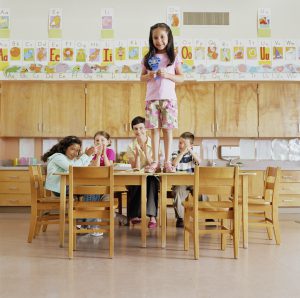
Nothing draws more heated arguments in the field of language instruction than methods. Between trademarks and remarks, there has been much divisive debate on which method is the right or the best method for teaching second language. This emphasis on the “right” method places unhealthy attention on the instructor and is the antithesis of where the focus should be—on the learner and on what learners need to develop communicative competence.
Dual Language Could ‘Save’ LA Schools
 According to speakers at last month’s meeting of Los Angeles Unified School District’s (LAUSD’s) Early Childhood Education and Parent Engagement Committee, early dual-language programs may prove to be the best way to ensure a quality education for the District with the largest English learner population in the nation.
According to speakers at last month’s meeting of Los Angeles Unified School District’s (LAUSD’s) Early Childhood Education and Parent Engagement Committee, early dual-language programs may prove to be the best way to ensure a quality education for the District with the largest English learner population in the nation.
Arabic
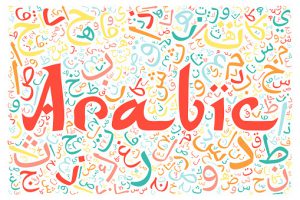 Arabic (العربية al-ʿarabīyah or عربي ʿarabi) is a Central Semitic language, thus related to and classified alongside other Semitic languages such as Hebrew and Syriac. In terms of speakers, Arabic is the largest member of the Semitic language family. It is spoken by more than 280 million people as a first language and by 250 million more as a second language. Most native speakers live in the Middle East and North Africa. Different spoken varieties of Arabic exist and differ according to region. Not all of the varieties are mutually intelligible and speakers may use a sort of medial language with features common to most Arabic varieties to communicate with speakers of mutually unintelligible varieties. Standard Arabic is widely taught in schools, universities, and used in the office and the media.
Arabic (العربية al-ʿarabīyah or عربي ʿarabi) is a Central Semitic language, thus related to and classified alongside other Semitic languages such as Hebrew and Syriac. In terms of speakers, Arabic is the largest member of the Semitic language family. It is spoken by more than 280 million people as a first language and by 250 million more as a second language. Most native speakers live in the Middle East and North Africa. Different spoken varieties of Arabic exist and differ according to region. Not all of the varieties are mutually intelligible and speakers may use a sort of medial language with features common to most Arabic varieties to communicate with speakers of mutually unintelligible varieties. Standard Arabic is widely taught in schools, universities, and used in the office and the media.
Modern Standard Arabic derives from Classical Arabic, the only surviving member of the Old North Arabian dialect group, attested in Pre-Islamic Arabic inscriptions dating back to the 4th century. Classical Arabic has also been a literary language and the liturgical language of Islam since its inception in the 7th century.
Arabic has lent many words to other languages of the Islamic world. During the Middle Ages, Arabic was a major vehicle of culture in Europe, especially in science, mathematics and philosophy. As a result, many European languages have also borrowed numerous words from it. Arabic influence is seen in Mediterranean languages, particularly Spanish, Portuguese, Maltese, and Sicilian, due to both the proximity of European and Arab civilization and 700 years of Arab rule in the Iberian peninsula.
Arabic has also borrowed words from many languages, including Hebrew, Persian and Syriac in early centuries, and contemporary European languages in modern times.
References for “The Art of Teaching” Feb. 2017
 References
References
Albert, A., and J. Kormos. (2011). “Creativity and Narrative Task Performance: An exploratory study.” Language Learning 61(1): 73–99.
Egbert, J. (2009). Supporting Learning with Technology: Essentials of Classroom Practice. Upper Saddle River, NJ: Pearson Education.
Green, S. N. (1993). Curious and Creative: Critical Thinking and Language Development. New York: Addison Wesley Publishing Company.
Guilford, J. (1967). The Nature of Human Intelligence. New York: McGraw-Hill.
Huh, K., and J. Egbert. (2010). “1+1 Does Not Always Equal 2: Exploring creativity, language learning, and field experience.” TESOL Journal 1(2): 206–226.
Jordan, A., and O. Carlile. (2013). Approaches to Creativity: A Guide for Teachers. London, UK: McGraw-Hill Education.
Reschly, A. L., and S. L. Christenson. (2012). “Jingle, Jangle, and Conceptual Haziness: Evolution and future directions of the engagement construct.” In S. L. Christenson, A. L. Reschly, and C. Wylie (eds.), Handbook of Research on Student Engagement (3–19). New York: Springer.
Torrance, E. P. (1962). Guiding Creative Talent. Englewood Cliffs, NJ: Prentice-Hall.
Tweedie, S. (2015, July 3). “How the Microwave Was Invented by a Radar Engineer Who Accidentally Cooked a Candy Bar in His Pocket.” Business Insider. http://www.businessinsider.com/how-the-microwave-oven-was-invented-by-accident-2015-4.
Teacher Resources for Black History Month
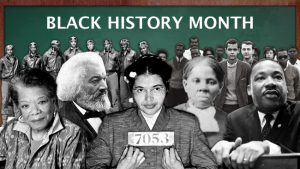 Looking Back to Move Forward
Looking Back to Move Forward
Ayanna Cooper shares teacher resources for Black History Month
Black History Week began as a week-long celebration to acknowledge achievements of Black Americans and other people of African descent 91 years ago. During the 1960s, this celebration grew into a month-long dedication to not only honor notable Black Americans but also to educate all Americans about the history and current achievements of people of African decent. Educators may have questions about how to approach celebrating Black History Month, especially in areas where there is lack of diversity within the student population or where Black History Month is not acknowledged school or district wide. How do we acknowledge the contributions of well-known heroes while creating space for current events and future leaders? Regardless of the context, Black History Month is a time to reflect on the past as we envision an even more inclusive society in the future. Here are five resources that provide a deeper understanding of Black History as well relevant current issues related to African Americans, diversity, and social justice.
U.S. Language Capacity ‘Diminishing,’ Despite Need
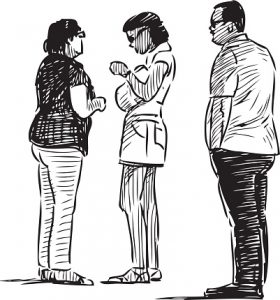 The American Academy of Arts and Sciences (AAAS) has released a report that suggests a “diminishing share” of U.S. residents speak languages other than English, a trend which the academy believes “could have important consequences for business, international affairs, and intellectual exchange.”
The American Academy of Arts and Sciences (AAAS) has released a report that suggests a “diminishing share” of U.S. residents speak languages other than English, a trend which the academy believes “could have important consequences for business, international affairs, and intellectual exchange.”
Republicans Introduce Bill to Replace Foreign Language with Coding in Virginia Public Schools
 Glenn R. Davis, R-Virginia Beach of the Virginia House of Delegates has introduced a bill that could essentially eliminate foreign language classes in favor of coding classes in Virginia. Virginia, which in 2013 had 99,897 ELL students according to the National Center on Immigrant Integration Policy, along with over 1 million students currently follows the Foreign Language and American Sign Language Standards of Learning and encourage school divisions to offer foreign language instruction beginning in the elementary grades.
Glenn R. Davis, R-Virginia Beach of the Virginia House of Delegates has introduced a bill that could essentially eliminate foreign language classes in favor of coding classes in Virginia. Virginia, which in 2013 had 99,897 ELL students according to the National Center on Immigrant Integration Policy, along with over 1 million students currently follows the Foreign Language and American Sign Language Standards of Learning and encourage school divisions to offer foreign language instruction beginning in the elementary grades.
Danish Government Calls For Language Testing
 Local Government Denmark (Kommunernes Landsforening-KL) has called for mandatory language testing of all three-year-olds entering their first year of schooling in order to combat social inequality. Danish researchers documented that there is a learning discrepancy of danish children entering elementary school of up to two years difference in language and social skills.
Local Government Denmark (Kommunernes Landsforening-KL) has called for mandatory language testing of all three-year-olds entering their first year of schooling in order to combat social inequality. Danish researchers documented that there is a learning discrepancy of danish children entering elementary school of up to two years difference in language and social skills.


